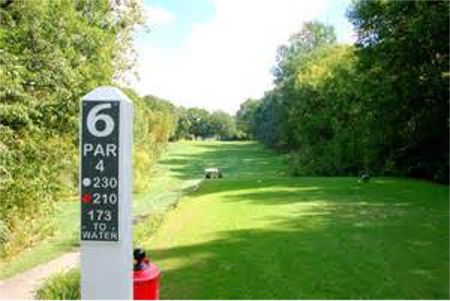 The aforementioned fourth hole at Pine Barrens demonstrates how ubiquitous sand is to the area. The option from the tee of this 494-yard par five is either to play safely left of the gaping waste bunker or drive over it, setting up a shorter approach to the green. Each time I’ve played this hole, however, I’ve pulled my drive to the fat of the fairway, an almost autonomic bailout in the face of a harrowing hazard.
The aforementioned fourth hole at Pine Barrens demonstrates how ubiquitous sand is to the area. The option from the tee of this 494-yard par five is either to play safely left of the gaping waste bunker or drive over it, setting up a shorter approach to the green. Each time I’ve played this hole, however, I’ve pulled my drive to the fat of the fairway, an almost autonomic bailout in the face of a harrowing hazard.
Pine Barrens is Fazio at his stylistic best—playing the course is an exercise in living on the edge. Here, the architect, who is sometimes criticized for creating postcardlike holes that place more emphasis on aesthetics than on strategy, slashed open the earth and created multiple angles of attack. Drives that hug the long waste area right of the fairway on the par-four eighth, for example, set up a short, clear view of a shallow green that fishhooks into the barrens; drives played more conservatively to the left yield a longer approach that must carry a deep tongue of sand protecting the front of the green. Both the par-five fourteenth and the par-four fifteenth have split fairways divided by scrub depressions, the latter offering a chance to carry the chasm and drive the partially hidden green.
Just two miles west of World Woods and possessing similar terrain is the Dunes Golf Club. Apart from the sand, the most striking thing about the routing is that it features more than fifty feet of elevation change. Arthur Hills, who designed the Dunes in 1988 and returned earlier this year to renovate it, once told me this was one of the best inland sites he’d ever worked with, and in the last two decades blessedly little about the surrounding property has changed. Plans for houses to be built around the course never materialized—this is a remote part of Florida—so it remains an isolated trek through an unspoiled landscape of longleaf pines, turkey oaks and blowout bunkers (which, despite rumors that they were caused by practice bombing missions during World War II, were created naturally and in some cases enhanced by Hills). “It’s always been one of my favorite courses,” Hills says. “I try not to have favorites, but that site is so gorgeous—the sand and the dunes. The course pretty much lies on the terrain.” Hills’s fondness for the Dunes is so strong that he even tried to purchase it in the mid-1990s. “We were thinking that we wanted to develop a kind of Pine Valley of the South,” he explains, “a place where people from all over would come and stay and play.”
